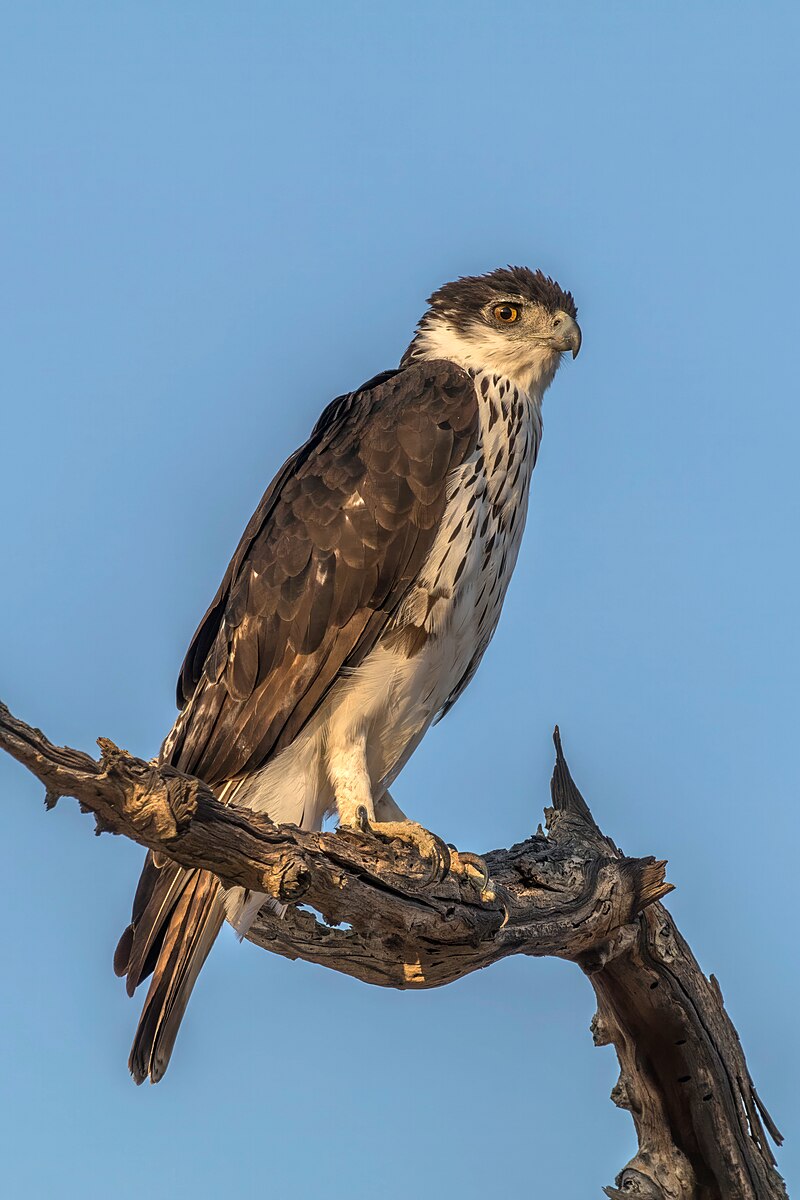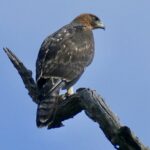The African Hawk Eagle and the Bald Eagle are two of the most impressive birds of prey in the world, each with its own unique characteristics and adaptations. In this comprehensive blog post, we will delve into the key differences between these two magnificent raptors, exploring their physical attributes, hunting strategies, and habitats.
Physical Characteristics: Size and Appearance
The Bald Eagle is slightly larger than the African Hawk Eagle in terms of overall body size. The Bald Eagle has a body length of 70-102 cm, a wingspan of 1.8-2.3 m, and a mass of 2.5-7 kg. In contrast, the African Hawk Eagle measures 56-65 cm in length with a wingspan of 122-152 cm and a weight of 1.2-2.1 kg.
Despite the size difference, the African Hawk Eagle has a more powerful foot, which is crucial for hunting and capturing prey. The Bald Eagle, on the other hand, has a more formidable beak, which is useful for tearing flesh.
| Characteristic | African Hawk Eagle | Bald Eagle |
|---|---|---|
| Body Length | 56-65 cm | 70-102 cm |
| Wingspan | 122-152 cm | 1.8-2.3 m |
| Mass | 1.2-2.1 kg | 2.5-7 kg |
| Foot Strength | More Powerful | Less Powerful |
| Beak Strength | Less Powerful | More Powerful |
Hunting Strategies and Prey
 Image source: African hawk-eagle by Charles J. Sharp
Image source: African hawk-eagle by Charles J. Sharp
The African Hawk Eagle is a skilled hunter, primarily feeding on birds and small mammals. Its powerful feet and sharp talons allow it to capture and subdue its prey with ease. In contrast, the Bald Eagle is known for its prowess in hunting fish, waterfowl, and small mammals.
The Bald Eagle’s fishing abilities are particularly impressive, as it can dive into the water to catch its prey. The African Hawk Eagle, on the other hand, is more adapted to hunting in hilly and mountainous regions, using its agility and speed to maneuver through the terrain.
Habitat and Distribution
The African Hawk Eagle is found in the African continent, preferring hilly and mountainous regions with rocky outcrops. These areas provide the ideal habitat for the eagle to nest and hunt. In contrast, the Bald Eagle is native to North America and is found near large bodies of open water, such as lakes, rivers, and coastal areas, where it can easily access its primary food source – fish.
The Bald Eagle is also the national bird and symbol of the United States of America, making it a highly revered and protected species in the region.
Nesting and Breeding
Both the African Hawk Eagle and the Bald Eagle are known for their impressive nesting and breeding behaviors. The African Hawk Eagle typically builds its nest on rocky ledges or in the forks of tall trees, while the Bald Eagle prefers to nest in tall, old-growth trees near water sources.
The Bald Eagle is known for its elaborate courtship displays, which can include aerial acrobatics and synchronized flight. The African Hawk Eagle, on the other hand, is more solitary and territorial, with pairs often defending their nesting sites aggressively.
Conservation Status
The conservation status of the African Hawk Eagle and the Bald Eagle varies. The African Hawk Eagle is classified as Least Concern by the International Union for Conservation of Nature (IUCN), indicating that its population is stable and not currently threatened.
In contrast, the Bald Eagle was once listed as an Endangered species in the United States due to the widespread use of the pesticide DDT, which caused a decline in its population. However, thanks to conservation efforts, the Bald Eagle has made a remarkable recovery and was removed from the Endangered Species List in 2007.
Conclusion
The African Hawk Eagle and the Bald Eagle are both impressive and majestic birds of prey, each with its own unique adaptations and characteristics. While the Bald Eagle may be slightly larger in size, the African Hawk Eagle’s powerful feet and hunting prowess make it a formidable predator in its own right.
Understanding the differences between these two raptors not only enhances our appreciation for the diversity of the natural world but also highlights the importance of conservation efforts to protect these incredible species for generations to come.


